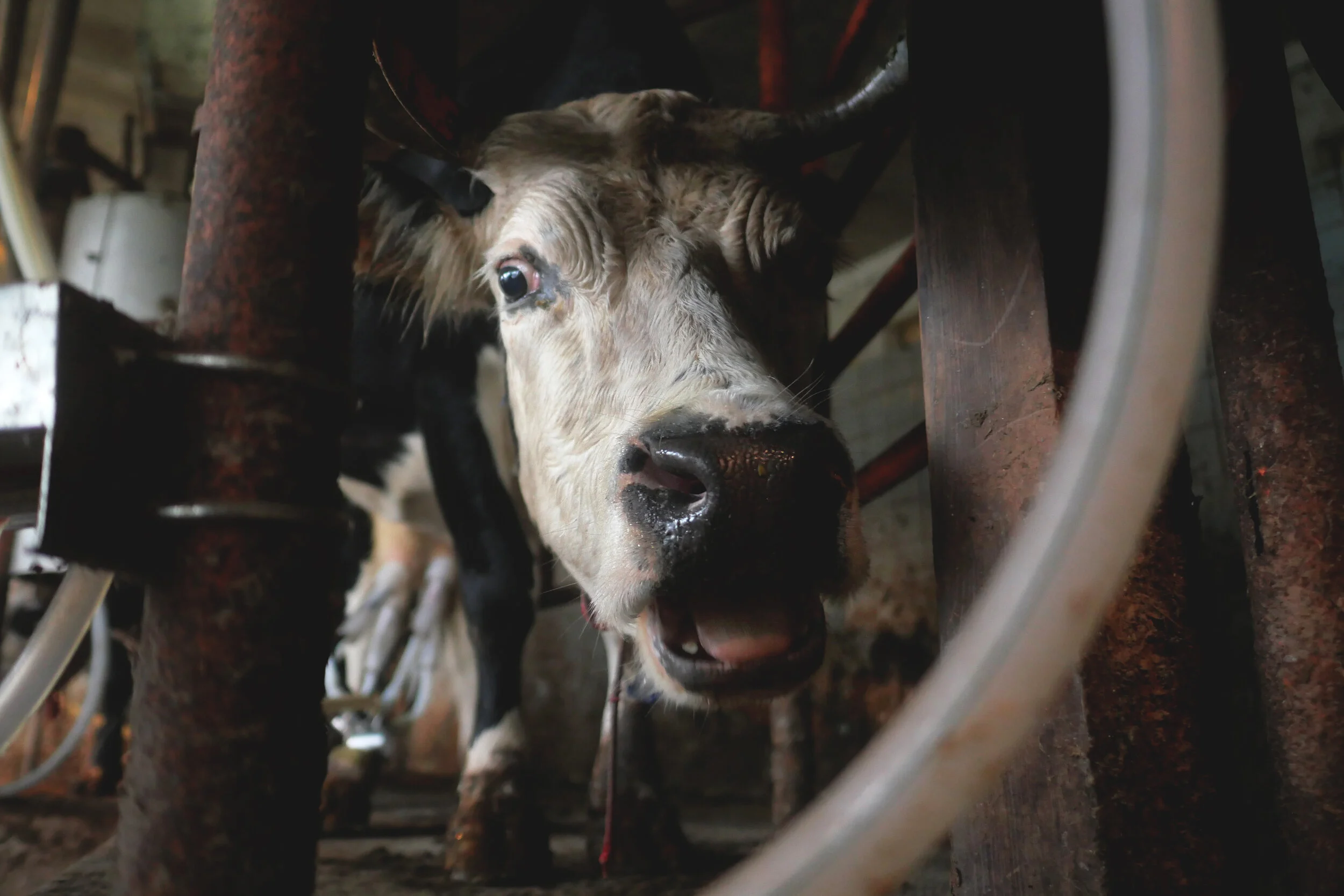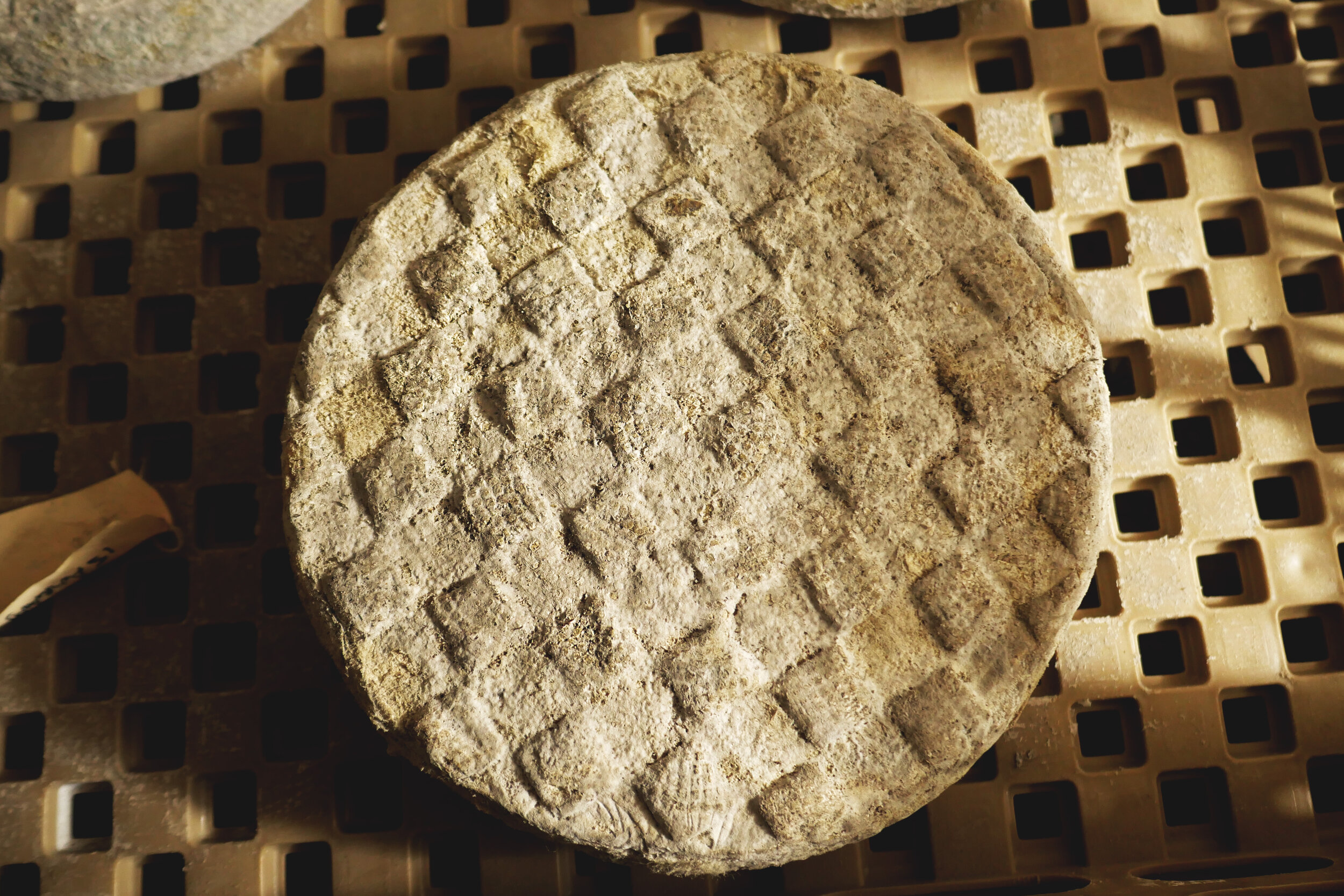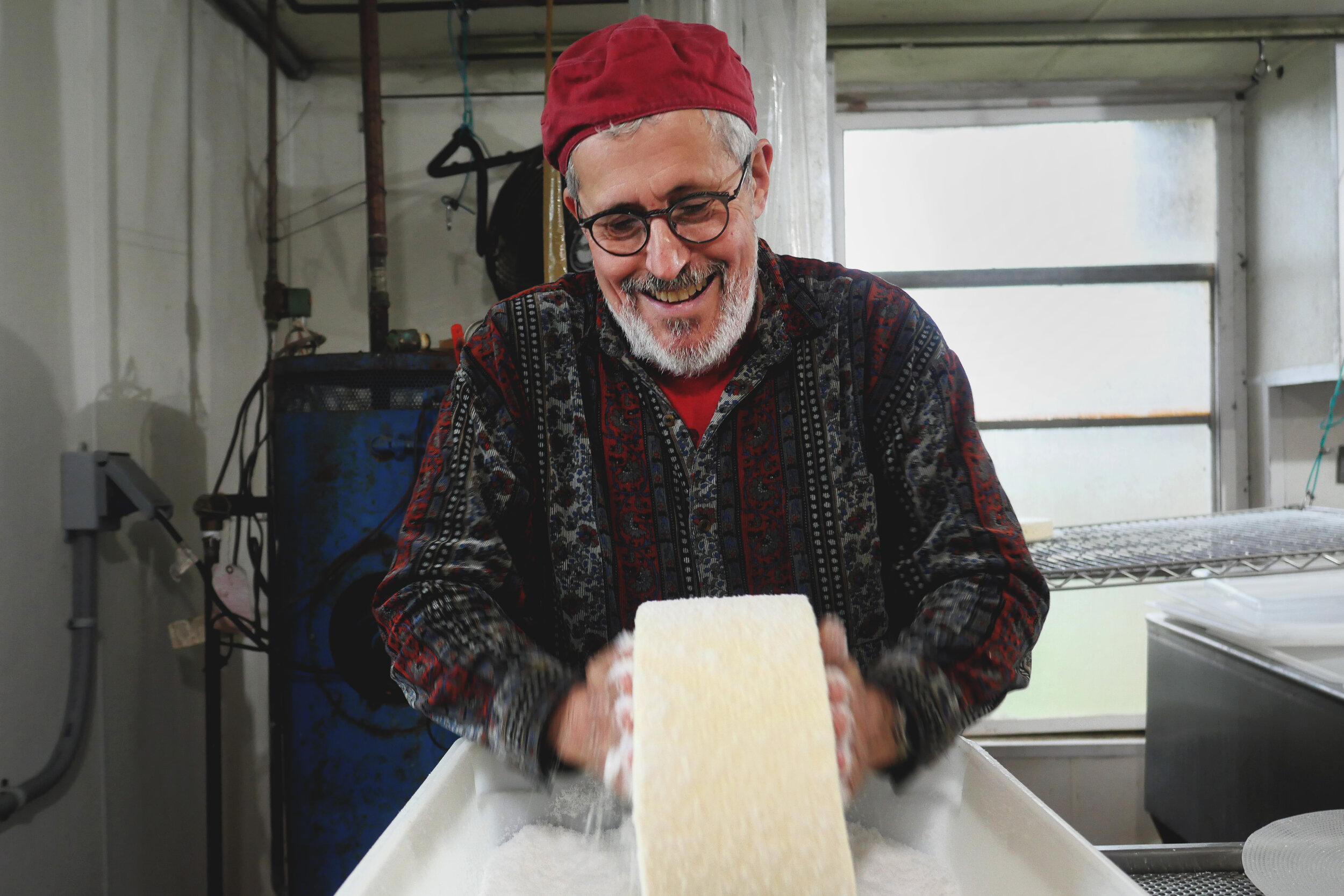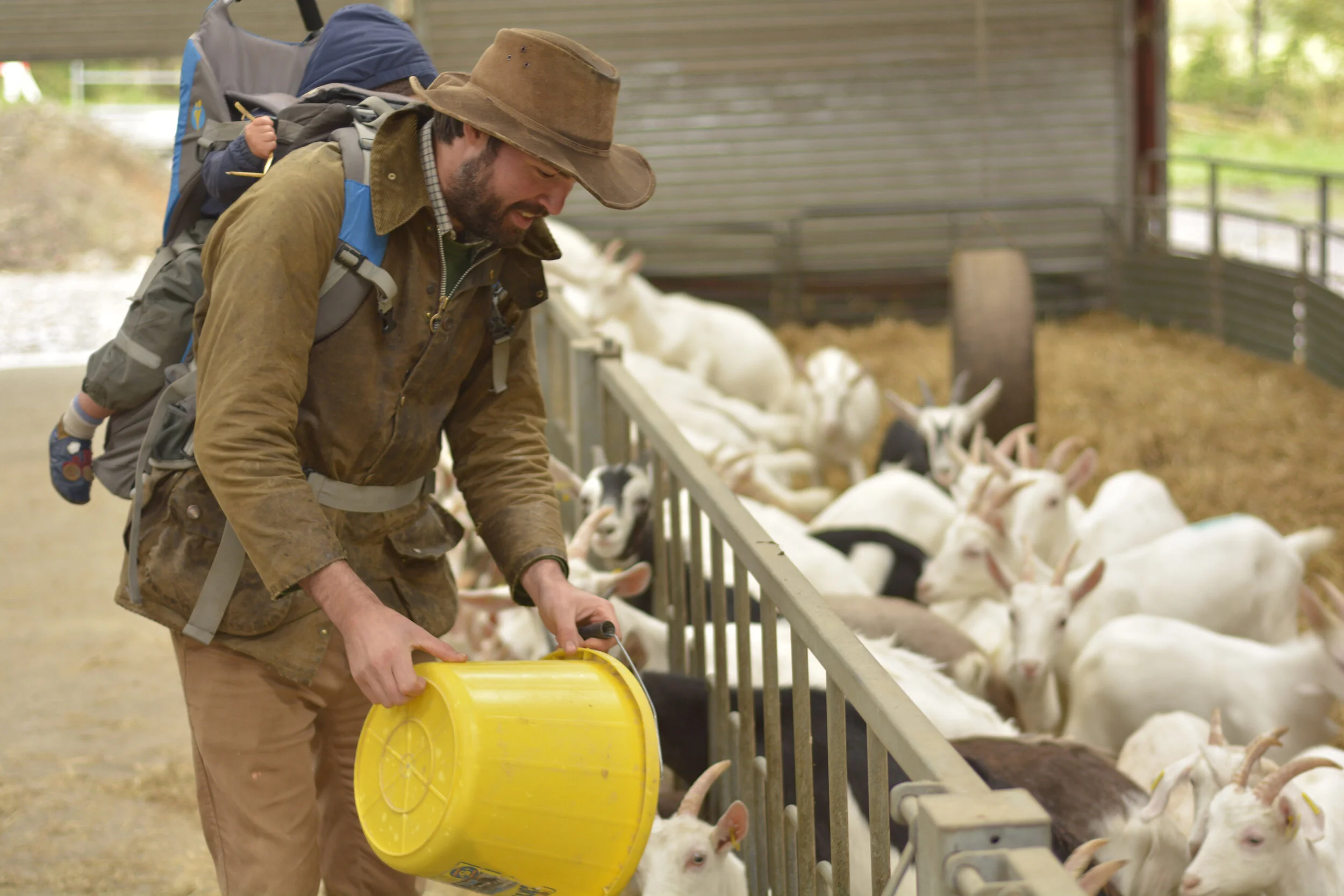Men Who Stare at Cows — A Day in the Life at Bobolink Dairy & Bakehouse in Milford, New Jersey
“Good Morning! Do you want coffee? Sorry, the milk’s not fresh, it’s from yesterday!”
It’s just after dawn in the kitchen at Bobolink Dairy Farm in Milford, New Jersey. We’ll hear that same joke repeated every morning we’re here, as owners Jonathan and Nina White welcome us into their home like newly adopted calves. This doesn't look like any part of New Jersey I’ve seen before: rolling wooded hills, dotted with suburban McMansions, working farms and endless trees with changing fall colours as far as the eye can see.
Photography by Jesse Friedman
Life on the dairy farm is like an album played on repeat. It’s a routine of walking the cows through the seasons; down the hill to be milked and back up the hill while the cheesemaking process is started. Each day fresh batches of bread are kneaded, formed and baked over burning wood at Nina’s onsite bakery. I jumped in for a weekend to experience life on the farm, and see how truly great cheese is made. Turns out it’s not made, it’s grown.
***
“The cheesemaking process begins with walking up the hill, fetching the cows and seeing what they ate,” Jonathan explains as we hike up the muddy incline.
“Coming out of summer, when it's really hot, the cows are stressed by the heat. They eat less and the heat stress will lower the quality of the milk, which makes it less suitable for the soft cheeses than for the firm cheeses,” he says. “As you come into autumn and the weather cools, the grass grows faster. It goes a little bit dormant during the heat of summer, especially this year. It was a drought.”
Jonathan pauses to survey the foggy field and cattle emerging from the dawn mist. “The cooler weather brings richer grass higher in nutrition and higher in flavour. And because the animals are living in nature, not in a barn, their biological calendar is telling them it's time to enrich, to fatten up their calves. So they're putting more fat in the milk. All of that makes our fall cheeses very different from our spring cheeses.”
At the top of the hill, the cows are leisurely strewn about, some walking around, some sitting on the ground. They’ve knocked down an electric fence that rotates what patch of grass they are grazing on and are luxuriating in the extra space. The herd almost completely ignores us as we walk between them. It’s silent except for the sounds of wet mud under our feet. I feel like an interloper in the cow’s space.
The silence is broken by Jonathan’s cheesemaking assistant, Henrique, who heads out to the far side of the field to start moving the cows down the hill. He yodels them in and swings a large walking stick to indicate it’s time for milking, his song bouncing off the tree line at the edge of the field. It feels mystical as he calls the cows out of the morning mist. And they respond!
The cows slowly rouse themselves and start to head down the hill toward the barn for their daily milking. They are a model of bovine diversity, with no two looking quite the same. Long horns lead back to black, brown, white and spotted cows, each a unique blend of colours. Some that feature black hair transitioning into a burnt sierra are especially beautiful. What kind of cows are these?
“They’re Bobolink cows, of course,” Jonathan explains. “We’ve been breeding our own cattle for 20 years. They are ‘ABH—Anything But Holstein.’”
“Holsteins are bred for high productivity and stupidity. My cows need to be able to think and have intuitive intelligence,” Jonathan says. “The main phenotype is Kerry, and Ayrshire, Guernsey, Jersey, Brown Swiss, Dutch Belted, Milking Shorthorn and Dexter.”
And they all have names.
***
Slice, Pinky, Shorty, Dahlia, Suzie, Tweetie—each name gives the cows a bit more identity than the typical bovine milk maker. It’s one of the first things I noticed working with the Bobolink cows. They all have number tags, but Jonathan and Henrique refer to all of them by name.
When I ask Jonathan why they are named, he shoots back “why wouldn’t they?” He’s somewhat offended by my idea that, because these are livestock, not pets, it would be emotionally more difficult to raise and slaughter them.
“I would feel strange killing an animal I didn’t have an ongoing relationship with, I want to eat an animal that had a good life,” he says. “Plus, how would we talk about the cows if they didn’t have names! We need to discuss each animal, and having a name is easier to remember than a number. We need to be able to talk about them, and they have personalities”
I really noticed the varied personalities among the cattle while we were milking. Some cows were happy to be there, wanted to be pet and loved human interaction. Others were... a bit less friendly. I let Henrique handle those cows.
““A great novel is like living tissue, same as with great cheese. It tastes alive.” ”
In the milking pens, right next to the nest of barn kittens, a whiteboard lists each cow’s name, number and milking status. Maybe one teat isn’t producing, or they aren’t being milked that day. Everything is tracked.
Henrique offers me a taste of milk fresh from the cow. The rawest milk imaginable. It’s... warm. Really warm. Cows maintain a body temperature of about 101.5 °F (38.6 °C), above human body temperature. It’s grassy and herbaceous, tasting of fresh-cut herbs with a light minerality. And it’s rich, with milk fat already collecting on the surface. The layers of flavour immediately make me think “wow, this tastes like Jonathan’s cheese.”
The milk is collected and heads via a pump into the next room to begin the cheesemaking process. Following the milk also means changing shoes. Muddy boots are swapped for white crocs and we head into the clean production space. A quart of milk is collected in a mason jar for tomorrow’s coffee and the rest begins its journey to cheese.
***
“The answers to most questions are either evolution or surface area to volume ratio,” Jonathan explains as today’s milk is pumped into a temperature regulated-holding tank. The first step is adding a starter culture, which will ferment the milk. Naturally occurring lactic acid bacteria are utilised, they just need to be primed. To achieve this yesterday’s whey is held at cow body temperature for 24 hours to create a starter culture for the next day. No additional pitches of culture are needed or wanted. Like a great sourdough or lambic, the cheese is made and fermented with the bacteria naturally living all around us.
After just an hour of fermentation, the milk tastes completely different. The sweetness is replaced by a tart acidic bite, but its complexity remains. When Jonathan feels the fermentation tastes right, rennet is added. Rennet enzyme will transform this liquid into a pillowy curd (think the texture of light tofu). It’ll take about an hour and so we head to lunch, which is: greens from the garden, fresh bread, plenty of cheese, and smoked leg of beef (“Charlotte is tasting pretty good!”)
This may sound circular, but the cheese really tastes like the milk, and the milk tastes like grass. All of the herbaceous sense of place the milk was embedded with is transformed into rich, dense cheese, bursting with flavour.
“You don’t want to be a sledgehammer cheesemaker, you want to coax the milk,” Jonathan explains. He sees his role more like a milk lifeguard, ushering it through the process, avoiding human intervention whenever possible. After lunch, it’s back to work, straight back into the rain and on to the dairy.
After an hour, the curd is ready to be cut using a wire tool and begins to separate into curds and whey—the liquid byproduct of cheesemaking. A few cups are sealed into a pint container and stored in an incubator to make tomorrow’s bacterial starter. The rest is collected for the pigs. Nothing is wasted, nothing does down the drain except cleaning water.
The partially drained curd is then collected and placed into perforated moulds. Each mould is filled at a particular moment in the curd-draining process, to get the right level of moisture in the young potential cheeses.
Once today’s cheese’s are in their moulds and have begun their long, funky journey to cheese deliciousness, we turn our attention to yesterday’s cheeses. They need to be flipped for even drainage and then salted. Each cheese is carefully removed from the mould and hand salted by Jonathan. There’s an air of watching a sushi master at work. No measurements, no tasting, just by touch alone he can tell the moisture levels, the cheese’s fermentation progress and what it needs to unleash its full cheesy potential. Jonathan can’t hold back a grin as he salts each creation with love and careful attention, creating the perfect saline environment for cheese maturation.
Then it’s off to the cave for the cheese. It’s not actually a cave, but a walk-in cooler, with regulated temp and humidity to emulate one. It smells like ammonia and dairy. The air is chilly and saturated with moisture. A bare lightbulb in the back illuminates the ageing wheels. Jonathan and Henrique wander the cave, checking on their progress. One touch or sniff elicits “oh these need more time” and real excitement with “ooooh, these are going to be ready this week.”
At the end of their stay at the Cheese Cave Hotel, the wheels check out and are sent to a hungry world. One of these cheese’s big fans is Chef Craig Shelton, who has been cooking at some of New York City’s most vital restaurants such as Le Bernadin, Bouley, and The Ryland Inn. He found Bobolink while developing the menu for Bouley “looking for something they could put up against the best cheese of Europe.”
“I’m going to need a minute to work towards it, what you’re asking of me is the same way you approach a piece of literature,” he tells me when I ask him to describe the experience of eating Jonathan’s cheeses. “A great novel is like living tissue, same as with great cheese. It tastes alive.”
They’re also sold at the farm store alongside Nina’s wood-fired bread (the duck fat garlic ciabatta will honestly change your life), NYC farmer’s markets and are mailed all over the country. Bobolink is a small patch of grass that’s transformed into cud, then milk, then cheese. It’s cheese with terroir; cheese that tastes of the dirt below the cows’ feet. No one ever told me that rural New Jersey could taste this good.
































